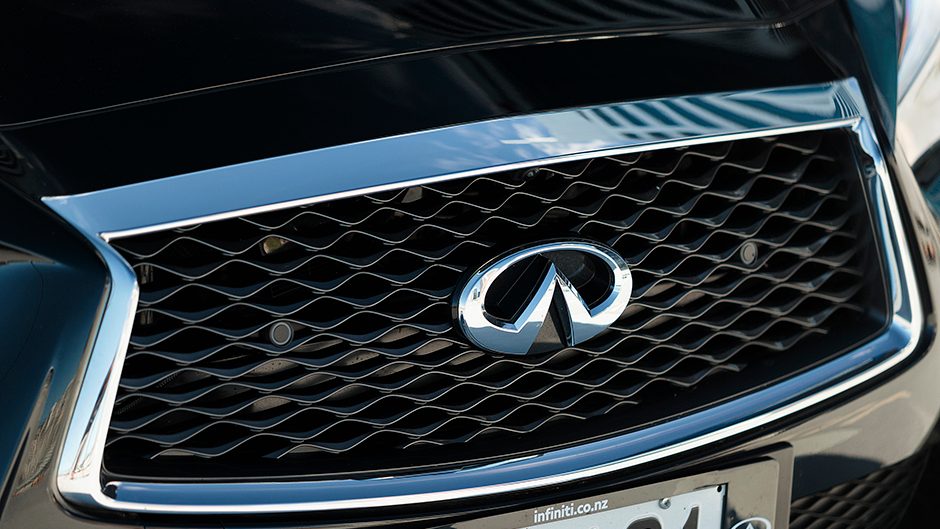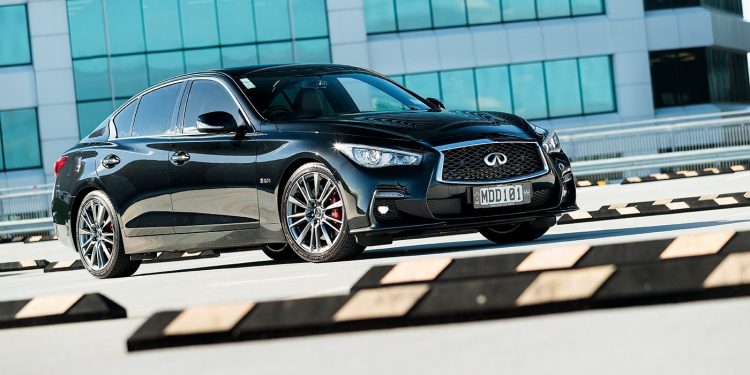2019 Infiniti Q50 Red Sport review
Words Kyle Cassidy | Photos Tom Gasnier
Credible sports sedan options aren’t as numerous as they once were but those who would rather have a quick car than a truck on their driveway should check out Infiniti’s Q50 Red Sport.
Those with $100k to splash on luxury wheels aren’t lacking for choice. There are all manner of SUVs, a few hyper-hatches, and the usual sedans, coupes, converts and wagons from the Euro marques. What if you’re after something particularly sporty?
Those aforementioned Euros will charge more for their performance variants, but search more liberally and there are the likes of Infiniti, a brand we haven’t featured much in the past. It has a set of worthy performance twins, one a coupe, the other a sedan, that offer equal amounts of luxury and sporting intent.
The coupe is the Q60 Red Sport which costs just under $100,000 but there’s also this Q50 sedan with the same engine and requiring fewer coins at $89,990, and it makes answering the $100k question that bit harder.
Powering this Red Sport is a boosted version of Nissan’s VR30 3.0-litre V6 delivering 298kW, with 475Nm on from 1600-5200rpm. That runs via a seven-speed auto to turn the rears. Q50 uses a Skyline platform with wishbones up front and a multilink rear. There are constantly adaptive dampers, a multitude of drive modes and something called Direct Adaptive Steering. This is electric steering in its truest guise.
When you turn the Q50’s steering wheel it sends a message to a control unit which sends a signal to the steering angle actuator living on the rack, and that turns the wheels. So, digital steering in other words. There is still a physical steering column, but only for safety’s sake, and it incorporates a clutch pack to disengage it from the process of steering. Without the physical connection between the steering and road wheels, they can filter more NVH, and there’s an increased level of customisation available to the driver.
You can alter the steering weight from comfort to sport plus, but also the level of response, making the steering turn more quickly away from centre if you want. So how does it feel? Well, quite normal really. You’re not overly aware that a stream of zeroes and ones is responsible for changing the wheel direction. With the rack’s responsiveness dialled right up, the Q50 turns quickly into bends, but it’s not ‘darty’ as they say.

The weighting in the three different settings is consistent and the Q50 filters the bumps you’d rather not know about. Yet there is enough of a ‘connection’ to let you know when the tyres are beginning to stress in the bends. The Q50 grips well on the front, the chassis balanced and the body movements checked by a sporty but measured suspension tune. When you’ve given the front as much as it will take, you can either ease off, or better still, squeeze the gas to entice the rear end around a little. Well, at least with the ESC off.
This we reckon could be tuned better; it’s often limiting the fun but on wintry roads, common sense said it was better to leave it on as there is a deficit of traction here. The rear treads do their best to stick the grunt but the pair of turbos rabidly stoke the fire of the V6, and the twist is ever present. The stout torque curve rises quickly and sticks around, giving this Q50 real muscle.
You definitely have to ease the throttle on out of bends – it’s no point and squirt AWD weapon – which we can appreciate, despite the frustration of having to wait patiently to get back on the power. The seven-speed auto isn’t reference grade in terms of smarts or shifting prowess but then it doesn’t need to work that hard. With the torque so forthcoming, third will usually get you out of the bends as fast as the rear tyres will allow. V6s can be sonorous, but not this one; it’s pretty flat until it’s spinning past 4000rpm.
And while it will go close to 7000rpm, there’s seldom the need to take it past six. So there’s little point in wringing the neck of this goose but it still honks, 0-100 done in five flat. You might squeak it into the fours with some patience while the 80-120km/h run was dusted in three seconds. The brakes perform okay, but could be stronger as the Q50 is close to 1800kg and can take some stopping. And the rubber is a little rowdy over coarse chip, but not raucously so. The constantly adaptive dampers have a sporty agenda, so can add some jostle over decent bumps but do the business of keeping roll in check. In comfort mode they work well at highway speeds. On such a cruise the steering doesn’t feel dead around centre, and the return function is well tuned.
In urban environs, there’s nothing awry with the helm either, apart from when you bang into the lock stops, which feels like you’ve broken it. Your travel experience is generally smooth, the 19s detecting a few of the choicer bumps about, but it is a luxury to have such smooth, easy torque at your disposal, the auto both slick and creamy as well.

The Q50 is rated at 9.3L/100km on average, though you’re looking at mid-13s for a mix of city driving and a few motorway miles. The Q50’s cabin has its charms. Its seats are super comfy with supportive padding and bolstering keeping you snug, and multiple levels of heating to get the blood flowing in winter. Nearly every surface is lined with soft leather padding. There’s a mix of asymmetric curves that will upset those that crave symmetry, and while there are a few Nissan bits in use, we can’t fault the build. The foot-operated park brake is antiquated however.
There’s a swish touchscreen controller on the dash which must have been added during a facelift stage; it’s at odds with the raft of buttons around it, and makes the sat nav screen atop the dash seem dated. There’s a confusing number of control options too; do you use the touchscreen, the buttons or the rotary knob on the console?
Smartphone hook up is absent. There are many safety features however, including a safety shield setting that will do its best to keep you out of harm’s way when you’re too busy checking on what your favourite influencer is telling you to do next. It’ll apply the brakes when the car ahead slows, and will prevent nose to tails in traffic snarl ups. The active cruise works to a full stop, but lacks a stop and go function. There’s lane keeping too.
Though quite large, it’s more of a four seater the Q50. It’s easy enough to get into the rear, and there’s good leg room though head space is lacking because of the sunroof. It has a proper boot with 500L on offer, and although the opening is small, there’s split folding for those longer, slimmer items.
Infiniti’s Q50 Red Sport should tick most of your sport sedan boxes and it sits in a good space for the money. Only the similarly-priced Jaguar XE S can trouble it for pace, and while the Cat is a better drive, it’s not as luxurious, well specified or spacious.
| Model | Infiniti Q50 Red Sport | Price | $89,990 |
| Engine | 2997cc, V6, T/DI, 298kW/475Nm | Drivetrain | 7-speed auto, rear-wheel drive |
| Fuel Use | 9.3L/100km | C02 Output | 214g/km |
| 0-100km/h | 5.05sec | Weight | 1776kg |






